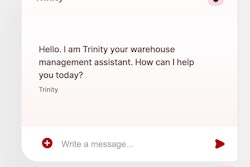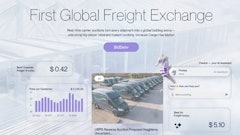
The food supply chain is comprised of multiple components that work together and rely on each other, ensuring efficient and safe processes crucial for running a smooth production line. Essential to a deep understanding of operations is collecting and contextualizing data to inform real-time decision-making when issues arise, or ideally before they become issues. Part of a holistic approach to data analysis is to pair your own company’s data with open-source information, but navigating the various and often intricate sources of information can be daunting, especially when considering the disparate sources of spreadsheets, within apps, in press releases, in news stories, images, and other origins.
Harnessing artificial intelligence (AI) via the power of large language models (LLMs) to tackle the complex data landscape transforms vast amounts of unstructured data into actionable insights that save money and time, increasing the food supply chain’s profitability, productivity, and safety.
The LLM deep dive
Implementing LLMs with Chat GPT-4 processes and interprets the unstructured data at remarkable speeds and with great accuracy, but to achieve this, an expert must set the correct parameters and perform a small number of manual checkpoints. Because LLMs expedite decision-making, automating the data analysis and interpretation process can streamline operations, reduce manual errors, and optimize resource allocation. Implementing LLMs allows poultry producers to focus on strategic priorities within the business in real-time.
When looking at this technology through the lens of the poultry industry, there is broad applicability to many sides of the business. Companies possess vast amounts of data from customer feedback, regulatory information, and production that, when quickly synthesized and analyzed, can turn data points into actionable insights. Believe it or not, raking social media content for insights into consumer trends and company feedback, or even comparing protocols to standards to increase or exceed compliance can be integrated into an LLM strategy to improve outcomes – increased profitability, safety, and quality.
LLMs in action
Let’s take a look at how the technology works in a real scenario for a tangible understanding of how this can apply to your business using a USDA food recall example. The unstructured data comes from sources like detailed announcements filled with technical jargon from the USDA, pathogen images, and data from excel sheets.
Another way LLMs can provide helpful insight is to implement them in processes like invoicing, shipping notices, and other logistical departments. Analyzing a document, like a shipping notice, can streamline the process by creating an alert for an actionable item. Having the technology detect shipping delays ahead of time allows the producers to plan for those issues and have more wiggle room to address the matter.
Besides using LLMs in the supply chain's main operations, they can also be utilized within departments like customer service and marketing. Consumer insights are crucial for understanding the current demand. Analyzing social media sentiments would provide an inside look at feedback on products and branding. It assists in immediate feedback and allows teams to plan for future marketing campaigns strategically. LLMs also have the capability to provide data on customer loyalty and satisfaction. Having data-backed insights into why customers come back (or why they don’t) provides necessary feedback for a company’s reputation and growth.
Without LLMs, these examples would be time-consuming and tedious to sift through manually. Instead, our trained system employs transformer neural networks to contextualize unstructured data, apply labels, and assign appropriate actions through the LLM knowledge engine.
Simply put, we can swiftly extract relevant information from plain text and images, identify affected problem areas, and take proactive measures to mitigate risks. In a dynamic industry like poultry production, staying ahead of the curve is essential to ensuring your company is monitoring threats in real-time to remain safe and profitable.
Humanzing AI for good
While LLMs offer immense potential and are powerful tools, they are not infallible. Human oversight remains crucial to ensure the accuracy and integrity of the data collected
Introducing LLMs into supply chain intelligence is a significant advancement for the poultry industry and all supply chain sectors. Utilizing the power of AI in a responsible manner allows companies to unlock new opportunities for innovation, efficiency, profitability, and safety.

















